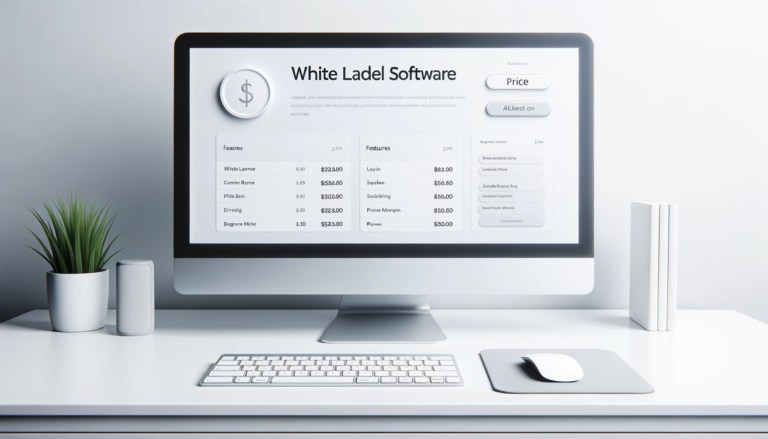What is Media Buying in Digital Marketing: Discover
Imagine you’re navigating the vast digital marketplace, where every click, impression, and conversion translates into value for your brand.
As you embark on the journey of media buying in digital marketing, you’ll align with diverse advertising platforms tailored to display your message to the world.
Here, your target audience becomes the compass, guiding you to make smart investments from your ad budget.
With every decision data-driven, metrics and analytics will be your map and sextant, ensuring you’re not just moving, but moving in the right direction.
You’ll need to master the art of media buying strategies, wielding them like an experienced captain at the helm because when the sea of digital marketing is charted correctly, your brand can sail towards the horizon of success.
We often find ourselves asking, “What is media buying in digital marketing?” As we navigate the complex digital landscape, we understand it as the process of purchasing advertising space on various online platforms.
Together, we strategize to ensure our ads reach the right audience at the optimal time, maximizing our brand’s visibility and engagement.
As you flip through the channels, you’re struck by how traditional media has evolved over the years. ‘Innovate or die,’ they say – and media buying in digital marketing is no exception.
We’ll dive deep into what media buying is, how it works, and why it’s important for brands hoping to stay competitive.
From the planning process and types of digital media to the role of a media buyer and the impact it has on marketing goals we’ll cover it all.
So join us as we explore this essential component of digital marketing.
Key Takeaways
- Media buying is essential in digital marketing as it ensures the right message reaches the right people at the right time, increasing brand visibility and generating new leads.
- Programmatic media buying and programmatic advertising have transformed the industry, allowing for real-time optimization and efficient spending.
- Media buying involves identifying the target audience, researching media outlets, negotiating deals, creating advertisements, and analyzing results.
- Different types of digital media channels and formats are available for media buying, including social media platforms, search engines, and affiliate networks.
Introduction
As digital marketing continues to evolve, so does the practice of media buying.
In this article, we’ll explore the evolution of media buying in the digital age.
We’ll define what media buying is and discuss its significance in the marketing world.
The Evolution of Media Buying in the Digital Age
With digital media becoming ever more prevalent, we’ve seen a dramatic shift in the way media buying has evolved over the years.
Programmatic media buying and programmatic advertising have been key to this transformation, and the use of a demand-side platform to facilitate the buying process has become an essential tool for digital media buyers.
As the world of digital media buying grows more complex, media buyers need to stay on top of new technologies, strategies, and trends to bring maximum value to their campaigns.
By leveraging cutting-edge tools and techniques, media buyers can deliver powerful, data-driven insights that deliver results for their clients.
As the industry continues to grow, media buyers must remain agile and able to adapt to changing conditions in the digital space.
The future of media buying lies in innovation and the ability to take advantage of the latest technologies and trends.
Defining Media Buying and Its Significance in Marketing
 We’ve all been through the process of buying ad inventory. Together, we navigate the complexities and challenges, ensuring we make the most informed decisions for our collective campaigns.
We’ve all been through the process of buying ad inventory. Together, we navigate the complexities and challenges, ensuring we make the most informed decisions for our collective campaigns.
Building on the advancements in the digital age that have revolutionized media buying, we’ll now explore the concept of media buying and its importance in marketing.
Media buying is the process of investing in digital media to help promote a product or service to an intended audience. It’s an integral part of any digital marketing strategy.
Here are the key components of media buying:
- Identifying the target audience
- Researching the media outlet
- Negotiating the best deal
- Creating the advertisement
- Optimizing and Analyzing results
Media buying is important as it helps to ensure that the right message is delivered to the right people at the right time.
A successful media buying strategy can help to increase brand visibility, create effective campaigns, and generate new leads. It’s essential for any business to understand and execute media buying correctly in order to maximize its marketing efforts.
Media Buying 101
We’ve all heard of media buying, but what exactly is it and how does it fit into digital marketing?
Media buying involves the strategic purchase of advertising space and time in order to reach a target audience. It is a key component of any media plan, and it is essential for any digital marketing strategy.
Media buying is a complex yet necessary process in digital marketing. A well-thought-out media buying strategy can help brands to maximize their results and reach their goals. Understanding the fundamentals of media buying is key to success.
Understanding the Fundamentals of Media Buying
We understand the importance of media buying in digital marketing and the need to understand the fundamentals of this strategy.
In this article, we’ll explore the digital shift and the digital media buying landscape.
We’ll also examine the implications of these new media buying strategies.
The Digital Shift: How Digital Media Transformed Buying Strategies
We’re in the midst of a digital shift that’s transforming how we buy media, and it’s time to understand the fundamentals of media buying.
Digital media buying involves the purchase of online advertising space to promote a product or service. This type of buying is typically done through two methods: programmatic buying and direct buying.
- Programmatic buying enables the automated purchase of digital display ads.
- Direct buying is a more manual process that involves the purchase of ads from a publisher.
Demand-side platforms are used to help buyers manage and optimize ad campaigns. Companies need access to data to inform their media buying decisions. It’s important to measure and track performance to determine ROI.
The Digital Media Buying Landscape
 As marketers, it’s essential for us to understand the digital media buying landscape and the fundamental principles behind it. Media buying is the process of buying advertising space across digital media channels and formats. It’s a complex process that requires strategic planning and execution.
As marketers, it’s essential for us to understand the digital media buying landscape and the fundamental principles behind it. Media buying is the process of buying advertising space across digital media channels and formats. It’s a complex process that requires strategic planning and execution.
Digital media buying is typically done through demand-side platforms, which are software-as-a-service tools, or through direct programmatic digital buying.
It involves researching and analyzing potential digital media outlets, developing a list of the most effective and cost-efficient options, negotiating with the publishers to get the best deals, and managing the campaigns.
As marketers, it’s important to have a good understanding of the entire media buying process to ensure successful campaigns. With the right knowledge, we can create innovative strategies that will maximize our reach and capture our target audience.
This concludes our discussion of the digital media buying landscape. Now, let’s move on to the next section to learn about the types of digital media: channels and formats.
You step into a world where digital media is the ability to connect, share, and create like never before. Every tap, click and swipe offers you a portal into endless possibilities.
Embrace it, for it’s the tool that shapes your voice in this digital age.
Types of Digital Media: Channels and Formats
When it comes to media buying, it’s important to understand the types of digital media channels and formats available.
From the Digital Media Buying Process to Programmatic Media Buying, to Media Buying on Social Media Platforms, and The Strategic Side of Media Buying, there are many options to consider.
We’ll take a look at these options and assess their suitability for your digital marketing needs.
The Digital Media Buying Process: A Step-by-Step Overview
You walk into the office, a fresh cup of coffee in hand, ready to tackle the day. As you skim through your emails, you notice an influx of messages about the latest trends in advertising media.
Intrigued, you decide to deep dive, realizing that staying updated on these trends could be the key to your next successful campaign. Let’s dive into the digital media buying process and explore the different types of digital media channels and formats available:
- Media Buying
- Digital media buying process
- Media buying and media planning
- Types of digital media
- Buying ad inventory
Media buying is the process of creating, negotiating, and purchasing digital media campaigns. It involves understanding the different types of digital media, researching the market for media opportunities, and negotiating with digital media owners for the best possible ad inventory.
The process requires a deep understanding of the digital media landscape, market trends, and competitive landscapes. It also requires strategic analysis and sound decision-making to ensure the most effective media campaigns are created and executed.
With the right media buying approach, an organization can maximize its return on investment, driving more leads and sales.
Programmatic Media Buying: The Automated Revolution
Building on the discussion from earlier, we can now look into the automated revolution of programmatic media buying and its different types of digital media channels and formats.
Programmatic media buying is a process that utilizes demand-side platforms (DSPs) to automate the purchase and placement of digital marketing campaigns.
This automated revolution has transformed the media buying process, streamlining the process, making it more efficient, and allowing for more precise targeting.
It enables marketers to purchase media in real time, allowing them to adjust campaigns on the fly and optimize for maximum ROI. With programmatic media buying, digital marketers are able to reach their target audience in an efficient and cost-effective manner.
Through this automated revolution, media buying has never been easier or more successful.
Media Buying on Social Media Platforms
 Continuing our exploration of programmatic media buying, we can now look at the different types of digital media channels and formats available on social media platforms:
Continuing our exploration of programmatic media buying, we can now look at the different types of digital media channels and formats available on social media platforms:
- Demand-side platforms (DSPs)
- Display ads
- Video ads
- Native ads
- Social media ads
Media buying on social media platforms is a crucial component of digital marketing that requires strategic planning and precision. This involves buying ad inventory, optimizing campaigns, and targeting the right audience.
By leveraging the right media buying strategies, businesses can maximize their reach and get the most out of their digital marketing efforts.
All of these efforts help to set the stage for the strategic side of media buying.
The Strategic Side of Media Buying
Having established the technical aspects of media buying on social media platforms, we now turn our attention to the strategic side of media buying to explore the various digital media channels and formats available.
For a successful media buying campaign, it is essential for the media buyer to understand the difference between the various media buying types and the corresponding planning and buying strategies.
With an in-depth understanding of the various channels and formats available, the media buyer can create an innovative and effective campaign that meets the goals of the company.
As a result, the media buyer should be familiar with the differences between display, search, video, audio, social, and native media buying.
Media Planning Process: Crafting Effective Campaigns
As digital marketers, it’s essential to understand the media planning process to craft effective campaigns.
We’ll examine the components of a successful media buying strategy, including aligning with marketing goals, integrating creativity and analytics, and targeting the right audience.
With this knowledge, we can take media buying to the next level.
Media Buying Strategy: Aligning with Marketing Goals
When it comes to crafting effective campaigns through media buying, aligning your strategy with your marketing goals is essential. A well-thought-out media buying plan will help you achieve the desired results in digital marketing.
To get started:
- Identify the target audience and choose the right media channels.
- Analyze the competition and plan the budget.
- Develop a media plan and optimize the content.
- Utilize demand-side platforms to streamline the process.
- Monitor and measure the performance of the campaigns.
Buying and Planning: Marrying Creativity with Analytics
 Now that you have identified your target audience, chosen the right media channels, and planned your budget, it is time to move on to the next step in the media planning process: crafting effective campaigns that marry creativity with analytics.
Now that you have identified your target audience, chosen the right media channels, and planned your budget, it is time to move on to the next step in the media planning process: crafting effective campaigns that marry creativity with analytics.
Media buying and planning requires using buying platforms, such as digital advertising, to place your media in the right context.
Media buyers and planners are tasked with leveraging data to drive strategic decisions and optimize campaigns. They must be able to identify the right audience, select the best-performing channels, and measure results.
The table below outlines the key components of media buying and planning and how they come together to drive effective campaigns.
Target Audience: The Heart of Every Media Buy
Building on the previous discussion of media buying and planning, we now focus on the key element of any successful media buy – the target audience.
Media planners must understand the audience they’re trying to reach in order to create an effective campaign. This requires research and analysis of the target demographics such as:
- Age
- Gender
- Location
- Interests
- Behaviors
It is the media planner’s job to make sure the right message is getting to the right people at the right time.
This is done through media buying, which involves selecting the right digital marketing channels to purchase ads on, such as search engine marketing, display advertising, social media, and more. When done correctly, media buying allows for better ROI and more efficient use of resources.
By understanding the target audience, media planners are better able to execute successful media buys for their clients. With this knowledge, they can create a plan that will deliver the right message to the right people and drive the desired results.
The next step in the media planning process is to take media buying into action and execute the plan.
Media Buying in Action
Once media planners have a clear understanding of the target audience, they can move on to crafting effective campaigns by taking media buying action.
Media buying is the process of acquiring ad space within digital marketing channels – such as Demand-Side Platforms (DSPs) – in order to effectively reach and engage the target audience. The following table outlines the media buying process:
Media buying requires strategic planning, research, and the ability to negotiate the best possible terms for ad space. It is an essential part of any digital marketing plan and requires careful consideration to maximize the return on investment.
With the right media buying strategy, marketers can effectively reach their target audience and achieve their desired goals. This transition to the next section about ‘the role of a media buyer in today’s market’.
The Role of a Media Buyer in Today’s Market
We are now exploring the role of media buyers in today’s digital marketing landscape.
Media buyers are responsible for negotiating and purchasing ad space, as well as working collaboratively with media planners.
They also manage different types of media buying, from direct to programmatic.
Ultimately, media buying is an integral part of digital marketing as it allows for the successful execution of campaigns.
Buying Ad Space: How Media Buyers Negotiate and Purchase
 We, the data enthusiasts, thrive in a world where the number of digital innovations grows exponentially.
We, the data enthusiasts, thrive in a world where the number of digital innovations grows exponentially.
We’re constantly negotiating and purchasing ad space to reach our target audience, and media buyers are key players in this process.
Media buying is a complex and strategic process that requires an understanding of the digital landscape, an in-depth analysis of the target audience, and the ability to negotiate and purchase ad space.
Here’s how media buyers navigate the process:
- Analyzing the market to determine the best way to reach the target audience
- Developing advertising campaigns that are tailored to the target market
- Negotiating pricing with vendors to obtain the best value for the ad space
- Purchasing ad space from vendors that fit within the budget
- Monitoring and optimizing campaigns to ensure maximum return on investment.
Media buyers are an essential part of the digital marketing process, and their ability to negotiate and purchase ad space is essential for success.
Media Planning and Buying: A Collaborative Effort
Building on our experience negotiating and purchasing ad space, we collaborate with media buyers to develop a plan for reaching our target audience in today’s market.
Media buying is a crucial part of digital marketing that requires strategic planning and collaboration between advertisers and demand-side platforms.
It’s a complex process that requires a keen eye for detail and a deep understanding of the market. By creating an integrated media strategy, media buyers can effectively maximize reach, engagement, and ROI for the advertiser.
Through careful analysis and insight, media buyers are capable of making informed decisions that can optimize campaigns and drive meaningful results.
This is why media planning and buying is such a collaborative effort. It requires a combination of creativity and analytical capabilities to ensure success in the ever-changing digital landscape.
With the help of media buyers, advertisers can navigate the complexities of the digital world and create profitable campaigns that reach their target audience.
Types of Media Buying: Direct, Programmatic, and More
In order to maximize reach, engagement, and ROI, media buyers must understand the various types of media buying available in today’s market, including direct, programmatic, and more.
The process of media buying requires careful consideration of the target audience, budget, and key objectives, making a media buyer’s role in the digital space more important than ever.
To best understand the role of a media buyer in today’s market, it’s helpful to consider the different types of digital media buying:
- Direct Media Buying: This process involves negotiating with media outlets to secure placements.
- Programmatic Media Buying: This process involves using automated software to purchase digital ads, streamlining the process for buyers.
- Social Media Buying: This process involves using algorithms to target specific users with ads on social media platforms.
- Search Engine Media Buying: This process involves purchasing ads through search engines to reach users searching for specific keywords.
- Affiliate Media Buying: This process involves purchasing ads from affiliate networks to target users with similar interests.
Ultimately, media buyers must understand the nuances of each type of media buying in order to maximize the reach, engagement, and ROI of their campaigns.
The Importance of Media Buying
As media buyers, it’s important to understand the role we play in today’s digital marketing environment. Media buying is the practice of acquiring media slots for ads, from purchasing ad space to creating the most effective placement of ads.
It’s essential to the success of any digital marketing campaign, as it’s the process that dictates how, when, and where ads are seen.
The importance of media buying lies in its ability to target audiences more precisely, creating a higher ROI with more efficient spending.
It also allows us to take advantage of demand-side platforms, which offer access to a variety of ad networks and exchanges and allows us to manage bids and optimize campaigns in real-time.
We must also consider the importance of media planning, which can be used to identify and engage target audiences. Good media planning is about more than simply buying ad space but also includes research, analytics, and insights.
Why Media Buying is Important for Brands
 For brands, media buying is an essential element of successful digital marketing campaigns. It involves the process of buying paid media across digital channels such as search, display, video, and social media.
For brands, media buying is an essential element of successful digital marketing campaigns. It involves the process of buying paid media across digital channels such as search, display, video, and social media.
Here are some key benefits of media buying:
- Increased reach and visibility: Media buying helps brands reach their target audience more effectively, thus resulting in greater visibility.
- Cost efficiency: By using data-driven approaches, media buying helps brands optimize their investments and maximize their spending.
- Improved user experience: Media buying enables brands to tailor their messages to the right target audience, thus providing a more personalized user experience.
- Increased ROI: By leveraging the right media channels, brands can maximize their return on investment.
- Data-driven insights: Media buying provides brands with valuable insights into user behavior, which can be used to further improve their digital marketing campaigns.
Media Buying vs. Media Planning: Understanding the Difference
When it comes to digital marketing, media buying, and media planning are two distinct concepts that often require different strategies.
Media buying involves purchasing access to various media types, such as online display ads, social media, television, radio, and more and typically takes place through demand-side platforms.
Media planning, on the other hand, focuses on the overall strategy and goals of the campaign, such as setting objectives, choosing the right channels, and optimizing campaigns for maximum ROI.
The Impact of Media Buying on Marketing Goals and Target Audience
In our roles, we often find ourselves deeply entrenched in the nuances of our industry. As we navigate the landscape, “used in media buying” becomes a phrase familiar to our ears, shaping the strategies and decisions we collectively make.
We facilitate the process of buying by providing comprehensive guides and expert advice, ensuring that our clients can make informed decisions quickly and efficiently.
By carefully selecting the right media channels and strategically managing campaigns, we can use media buying to effectively target our desired audiences and reach our marketing goals.
It’s an indispensable tool in digital marketing that helps us reach the right people, at the right time, and with the right message.
Here are some of the key benefits of media buying:
- It allows us to reach a wider audience by leveraging a variety of media channels.
- It offers more precise targeting, enabling us to reach the right people.
- It gives us the ability to track and measure campaign performance.
- It helps us stay on top of industry trends and better understand our target audience.
- It allows us to optimize campaigns and maximize ROI.
Media buying is an invaluable part of digital marketing, and it’s essential for achieving our marketing goals and targeting our desired audiences.
Conclusion:
We’ve explored the ins and outs of media buying in digital marketing, from understanding the basics of media buying to the differences between media buying and planning.
Through it all, we’ve seen how media buying can have an immense impact on a brand’s marketing goals and target audience. It’s essential for brands to craft effective campaigns with strategic media buying to ensure success.
By utilizing the power of media buying, brands can engage with their audience and ensure their message is heard loud and clear.
Frequently Ask Questions:
Q: What is media buying in digital marketing?
A: Media buying in digital marketing refers to the process of purchasing advertising space or time on various digital platforms in order to reach and engage with the target audience effectively.
It is an essential component of the overall marketing strategy and helps businesses promote their products or services through various digital channels.
Q: What is the difference between media buying and media planning?
A: Media buying and media planning are two closely related terms in digital marketing.
While media buying focuses on the actual process of purchasing ad space, media planning involves the strategic decision-making process of determining the most effective platforms and channels to reach the target audience.
Media planning comes before media buying and helps in optimizing advertising efforts.
Q: How does media buying work?
A: Media buying involves several steps. First, the marketing team identifies the target audience and their preferences. Then, they research and analyze various digital platforms and their audience demographics.
After selecting the appropriate platforms, negotiations are made to determine the best pricing and ad placement. Finally, the ads are purchased and displayed on the selected platforms, targeting the desired audience.
Q: Why is media buying important in digital marketing?
A: Media buying is important in digital marketing as it allows businesses to reach their target audience effectively and efficiently.
By strategically placing ads on relevant digital platforms, businesses can increase brand awareness, attract new customers, and drive conversions. Media buying helps in maximizing the return on investment (ROI) by ensuring ads are displayed to the right audience at the right time.
Q: What are the current trends in media buying?
A: Some current trends in media buying include programmatic advertising, which involves automated ad buying and placement, and the increasing focus on paid media on social media platforms.
Additionally, targeting specific audience segments, using data-driven insights, and integrating technology for real-time ad optimization are becoming popular practices in media buying.
Q: What is programmatic advertising?
A: Programmatic advertising is a method of buying and selling digital ad inventory through real-time bidding systems.
It involves the use of automated algorithms and artificial intelligence to analyze data, determine the best ad placements, and make purchasing decisions in real time. Programmatic advertising allows for more efficient and targeted media buying, ensuring ads are shown to the most relevant audiences.
Q: What are the different types of digital media buying?
A: There are several types of digital media buying, including display advertising, video advertising, native advertising, social media advertising, and search engine marketing (SEM).
Each type has its advantages and can be used based on the campaign objectives and target audience.
Q: What is the process of media buying?
A: The process of media buying involves several steps. First, the marketing team identifies the target audience and their preferences. Then, they research and analyze various digital platforms and their audience demographics.
After selecting the appropriate platforms, negotiations are made to determine the best pricing and ad placement. Finally, the ads are purchased and displayed on the selected platforms, targeting the desired audience.
Q: How can media buying be made more effective?
A: To make media buying more effective, it is essential to have experienced media buyers who understand the target audience, have in-depth knowledge of the digital advertising landscape, and can make data-driven decisions.
Additionally, proper media planning, selecting the right platforms, and continuously monitoring and optimizing campaigns can help improve the effectiveness of media buying efforts.
How Does Media Buying Play a Role in Affiliate Marketing?
Media buying is an essential aspect of affiliate marketing. It involves purchasing advertising space on various platforms to promote affiliate products. Effective media buying strategies can significantly boost conversions and generate higher commissions.
However, it is crucial to understand how to avoid affiliate marketing failures to ensure successful campaigns. Implementing proper targeting, testing ads, and optimizing landing pages are a few key ways to maximize the impact of media buying efforts in affiliate marketing.
Q: What is the role of media buyers and planners in the process of media buying?
A: Media buyers and planners play a crucial role in the process of media buying. Media planners are responsible for determining the most effective platforms and channels to reach the target audience, while media buyers handle the negotiations, purchasing, and placement of the ads.
Both roles require a deep understanding of the target audience, the digital advertising landscape, and effective strategies to maximize the impact of media buying.






